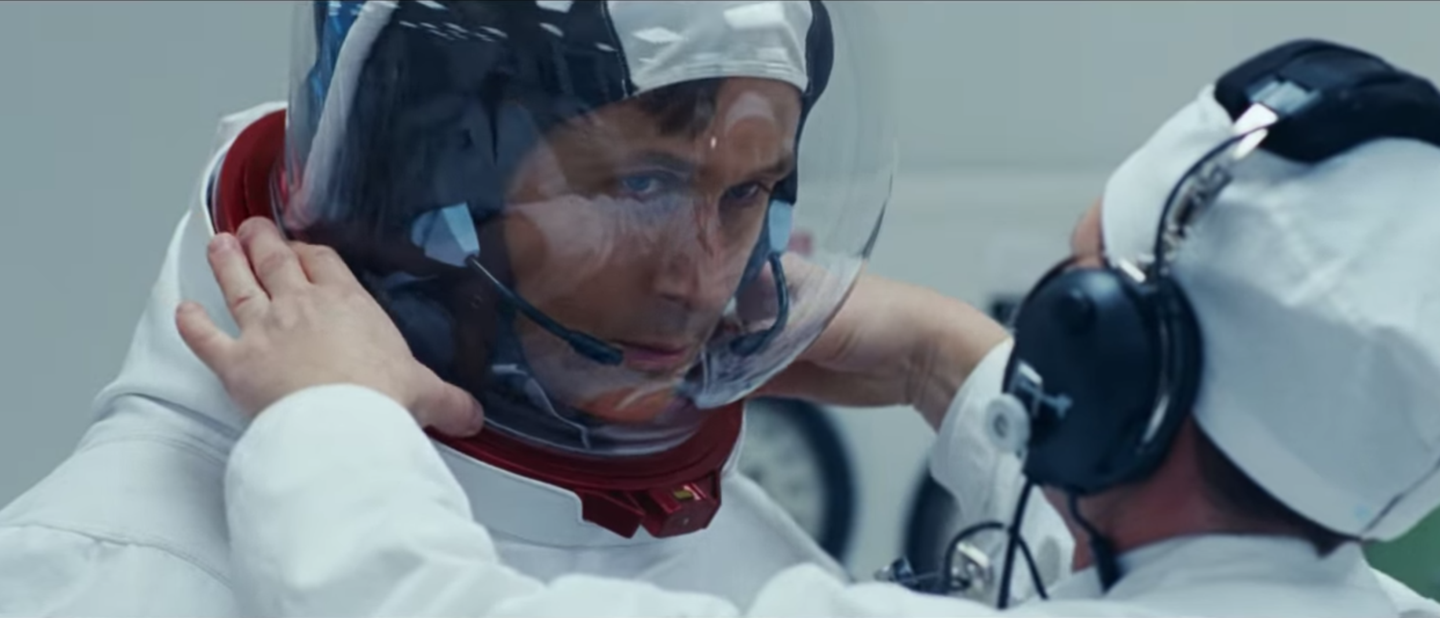I like space movies. I like spaceships and aliens; I like planets and moons. I also like a good biopic, so when I went to see this movie, I was excited, thinking I would watch a true story movie about space. I didn’t get what I signed up for.
Claire Foy (The Crown) and Ryan Gosling play the Armstrongs, Janet and Neil respectively. On the outside, they are the idyllic American couple with two sons and a daughter, who live in a happy home with a nice yard, complete with pearls, meals on the table at dinner, and a kiss on the cheek once he walks through the door.
In a political climate that is focused on giving a voice to the minority, on realizing that white people aren’t the only people, it seems a weird choice to have only white people in this movie, when the public knows full well all about the many people, genders, races, ages, that it took to fly Neil Armstrong to the moon. (Hello, Hidden Figures.)
The only time a person of colour appears on the screen is during a protest. A protest against the moon launch, against the money being spent to go to a new place, when Earth is still such a disaster. “Whitey on the Moon,” a reference to a Gil Scott-Heron poem, is quoted in the protest. Is it a coincidence that this is the only time we see a person of colour in this movie, or is it a commentary that we still don’t see the diversity of our nation, especially on the big screen?
When I first saw the poster for the movie, I thought, “Cool, the prequel to Tom Hanks’ Apollo 13.” But this movie was like drinking milk just a bit past its due date: off, and leaves a sour taste in my mouth.
The whole film plays like a wet dream of the white Republican, depicting an “ideal” America: the 1960s extreme of perfect house, perfect hair, perfect kids. The footage is even filmed like a home movie in parts, with handheld camera, odd angles, and seemingly private, everyday moments playing out on screen, showing that even in privacy, the mirage was never broken. They truly were the picture of perfection.
It’s an odd move to focus on the white, American male, living the white American dream, being the ultimate figure of manhood. Armstrong is depicted as unemotive, unavailable, and unmoved by tragedy — the loss of his daughter, the loss of his best friend. Here he stands, the ultimate man, the first to walk on the moon, stoic in the face of danger and loss. Hero. Visionary. Man of the century.
It angered me until I realized that maybe it was intentional. Maybe, if the viewer looked close enough it was a commentary on how we can no longer focus on the accomplishments of some without acknowledging the accomplishments of those behind, the ones who don’t receive the glamour of the spotlight. Maybe it was a commentary on how easy it is to slip back into the regularity of normative white movie stars fulfilling white roles in white America. Or maybe it’s just a story about a white man in America who went to the moon.


